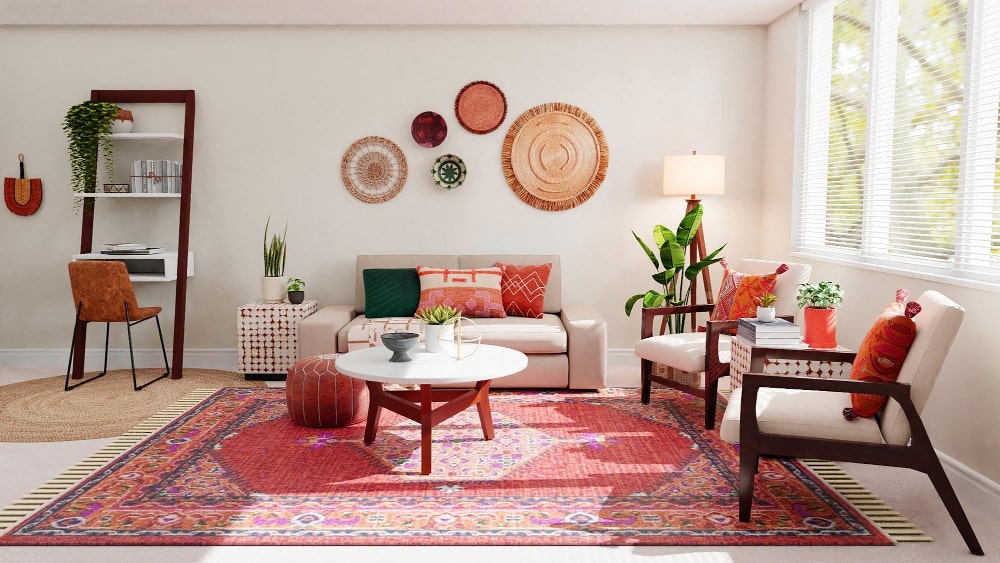Change Your Home With Necessary Principles of Inside Design and Aesthetics
By understanding the influence of shade theory and the value of appearance and patterns, one can develop areas that are not just visually enticing but likewise deeply individual. Achieving this stability involves even more than simple design; it includes a strategic plan and an eager understanding of exactly how each element interacts within a room.
Comprehending Shade Concept
Comprehending the principles of color theory permits developers to develop rooms that resonate mentally with owners while fulfilling practical requirements. Each classification plays a critical duty in establishing harmony within an area.
The psychological impact of colors is profound; cozy hues such as reds and oranges evoke power and heat, while cool tones like blues and eco-friendlies advertise peace and harmony. Moreover, using complementary colors improves aesthetic interest, producing striking contrasts that can boost a space's appeal.
Neutral colors, on the other hand, function as a functional background, enabling various other layout elements to shine. It is necessary to take into consideration variables such as lighting and the area's function when choosing a color scheme, as these can change the perception of shades throughout the day.
Ultimately, a well-considered color pattern can change a room, promoting a feeling of convenience and style that lines up with the occupants' preferences. Proficiency of shade theory is, as a result, a vital ability for any indoor developer aiming to produce unified and welcoming settings.
Attaining Balance in Design
Just how can developers attain a sense of equilibrium in their areas? Accomplishing equilibrium in layout is fundamental to creating unified insides. Developers can make use of three key kinds of balance: balanced, unbalanced, and radial. Symmetrical balance involves organizing elements equally around a main point, cultivating a feeling of order and serenity. This type often features pairs of furnishings or artwork, boosting visual security.
Asymmetrical balance, on the other hand, counts on varying components that still accomplish a natural appearance. This method permits for even more vibrant and casual plans, giving interest while keeping stability. By meticulously picking varying sizes, shades, and appearances, designers can develop a visually compelling area that feels balanced yet energetic.
Radial equilibrium highlights a main focal point with aspects radiating exterior. This design is frequently seen in circular layouts, where furniture and style develop a natural border that attracts the eye internal.
Ultimately, attaining balance requires thoughtful consideration of scale, proportion, and the connections between aspects. miami interior design. By masterfully using these equilibrium concepts, developers can transform spaces right into atmospheres that really feel both cosmetically pleasing and functionally unified, boosting the general experience for occupants
Value of Spatial Awareness

A keen feeling of spatial awareness permits designers to identify prime focus within a space, assisting the visitor's attention to essential features while preserving an overall feeling of unity. It also aids in the calculated placement of lighting, which can significantly influence the understanding of room and mood. Additionally, understanding spatial relationships makes it possible for the designer to satisfy the particular demands of citizens, ensuring anchor that each location offers its designated function without compromising appearances.
Eventually, spatial recognition is important for taking full advantage of the possibility of any type of this post interior space. By thoroughly thinking about the interaction in between measurements, format, and feature, designers can develop settings that not only satisfy functional demands yet likewise stimulate a sense of comfort and appeal, improving the general living experience.
Including Structure and Patterns
Welcoming a varied variety of structures and patterns can substantially enhance the visual and responsive appeal of an indoor room. The strategic usage of various materials-- such as timber, steel, textile, and rock-- creates deepness and passion, making a space feel a lot more welcoming and vibrant. For circumstances, integrating smooth surfaces with rough structures can develop an equilibrium that draws the eye and engages the detects.
When integrating patterns, think about both scale and rep. Large patterns can serve as centerpieces, while smaller sized, subtle styles can enhance other components without overwhelming the room. Layering patterns, such as pairing floral pillows with candy striped throws, includes complexity and a feeling of harmony if performed thoughtfully.
It is additionally essential to preserve a cohesive color scheme, guaranteeing that structures and patterns work with each other instead of contend for attention. By picking a few essential textures and patterns, you can create a merged aesthetic that mirrors your individual style while boosting the general atmosphere of the space. Ultimately, the mindful incorporation of these aspects can change a mundane space into an advanced atmosphere rich with personality and warmth.
Individualizing Your Space
Producing an area that reflects your character is essential to attaining a really welcoming environment. Personalization in interior layout allows you to infuse your one-of-a-kind style and interests into your home, Going Here changing it from a mere sanctuary right into a sanctuary that speaks with that you are. Begin by choosing a shade combination that resonates with your emotions-- bold shades can invigorate, while soft tones supply harmony.
Include artwork and design that show your passions, whether it be traveling, nature, or abstract ideas. Displaying personal collections, such as publications, photos, or keepsakes, can stimulate treasured memories and produce focal factors within an area. Furthermore, consider personalizing practical pieces, like upholstered furnishings, to line up with your aesthetic choices.

Conclusion
In final thought, the change of a home through the necessary concepts of indoor design and looks requires a detailed understanding of shade concept, balance, spatial recognition, structure, and personalization. Each element adds considerably to developing a harmonious and functional living setting - miami interior design. By attentively incorporating these principles, people can boost the visual appeal and psychological resonance of their areas, ultimately fostering a home that shows special identities while offering convenience and practicality